

1
Read some of our great articles on a range of parenting topics from sleeping to teething. We publish new blog posts regularly and feature a number of baby sleep experts and their top tips
Filter by tag:
Tags...Nov 23 2018
Posted by: SnoozeShade HQ
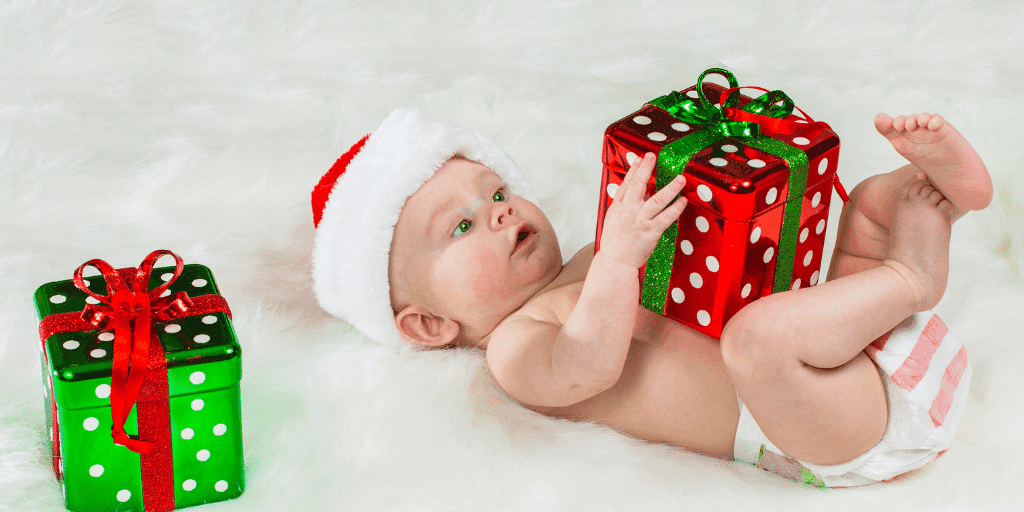
As December approaches, families up and down the country are starting to plan for the festive season and holiday preparations are beginning. The main subject of debate for many families is where to spend Christmas day and sadly, this can also be the source of many arguments.
Christmas can be exhausting, so why not enjoy it, put your feet up and let others do the cooking for a change? If you are hoping to get away on vacation with your baby this Christmas or if you have more than one child, here are some great tips to help you make the most of your festive get-away.

Being away at Christmas will require some extra effort on your part to make it magical for the children. Being away from all things familiar, their usual television viweing, friends and their own Christmas tree may be unsettling. Here are some tips for sprinkling a little Christmas magic while you’re away:
Being away at Christmas does take a lot of planning but there is a real potential for making some long-lasting, happy memories too. Being away from home can encourage parents to put away the laptop and cell phone and to relax. Being in a sunny climate can help you feel happier too, at what is sometimes a grey and cold time of year.
If you choose a vacation apartment, you can make it your own during your stay and keep the festive spirit alive. If you’re staying in a hotel, the chances are high that vacation activities have been well planned too.
Being away from the ‘hype’ at home might be just what you need to enjoy a relaxing and memorable break with the kids.
Further Reading:
13 Expert Sleep Tips for Your Baby and Child Over Christmas
Four Christmas Eve Baby Bedtime Tips
Three Tips for Dealing with an Overtired Baby at Christmas
Nov 16 2018
Posted by: SnoozeShade HQ
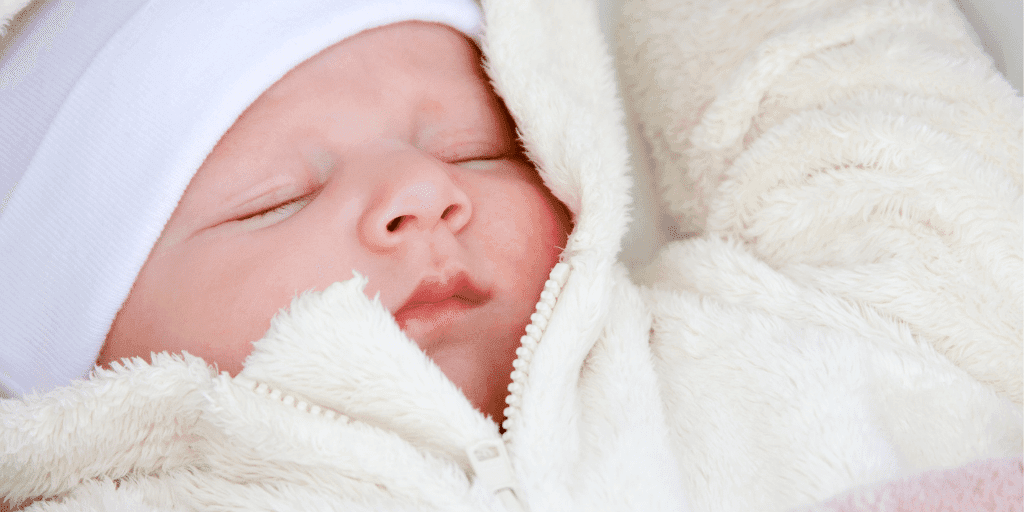
We love winter here at SnoozeShade HQ but we often get questions from parents wanting to know how to keep babies safe whilst sleeping in colder temperatures.
Baby sleep safety is vitally important and you need to know how to keep your little one safe. Do please speak to your doctor if you have any questions or are unsure about any aspect of your baby’s sleep.
Here’s our quick guide to winter baby sleep safety!
During the colder months, it’s real important to adjust your baby’s bedding and clothing dependent on where your baby is sleeping. There is absolutely no reason why your baby cannot sleep outdoors in the stroller when you’re out and about during the colder months – in fact, the SnoozeShade is just perfect for this. Not only will it provide a shady nook for your little one to snooze in, it will also protect against wind, light rain, winter chills and the low rays of the winter sun too. So, if your baby usually takes daytime naps in the stroller, there is no reason to change that during the winter.

It’s important to keep a check on your baby’s room temperature and make adjustments if it get too hot or cold. The ideal nursery temperature is between 16-200C – use a nursery thermometer to keep an eye on this.
At that temperature, your baby needs an undershirt and cotton sleepsuit, plus a comforter or a 1 TOG sleep sack. If the room is colder, under 160C, add an extra blanket or use a 2.5 TOG sleep sack.
Don’t be tempted to add layers and run the risk of overheating, which is very dangerous for babies and has been linked to Sudden Infant Death Syndrome or Cot Death.
Further Reading:
What Temperature Should My Baby’s Room Be
Ten of the Best Baby Sleep Sacks
Using Your SnoozeShade in Cooler Weather
Oct 25 2018
Posted by: SnoozeShade HQ

Parents, listen up! The pesky clocks are changing soon (Sunday 28th Oct 2018, to be precise). And so, into the British winter we delve. But what about our precious snoozing bundles? They have no concept of the clock change and are governed only by their own body clocks. How do we help them to transition through the loss of an hour’s sleep? Easy. Ish. Here are some tips for coping with the clock change, and preserve your own sanity at the same time. Hey, at least the clocks are going back this time- in theory we should be gaining an extra hour in bed, right?
Start changing bedtime NOW
A whole hour can make all the difference for some kids, so if you know your little one is likely to find the transition to a later bedtime a little difficult, you need to start the change now. Delay bedtime by 15 minutes every day from now until Saturday, and I guarantee it will make it a little easier. By the time the clocks actually change, your little one will be going to bed an hour later than usual, and therefore the ‘new’ bedtime will be a breeze. So for example:
Once this transition has been made, you will continue to put baby to bed at the usual time of 7pm, but as the clocks have changed this will not affect her sleep at all. Her body will be used to this new time. And hopefully she won’t wake up at 6am instead of 7!
Don’t forget to adjust naps too
If your daytime routine allows it, adjust your baby’s naps to suit the clock change too. It will make it so much easier when the clocks have moved back an hour. Don’t forget that if your little one is finding it hard to adjust to a new nap time, the SnoozeShade is your friend! Lots of families report that the shade acts as a sleep cue for their little ones, and at the very least you’re blocking stimulation to make sleep a lot easier.
Make sure your routine is up to scratch
A good bedtime/ sleep routine is so important for little ones, and never more so than when the clocks are changing. Start tweaking now if you need to, to make sure that everything is running smoothly when the clocks move back. Remember to stay consistent and all will work out well.
Make sure your child’s bedroom is inviting for sleep
Again, now is the time to check your child’s bedroom and make sure that it is a suitable environment for sleep. Is it warm enough, dim enough and safe enough? You want to eliminate all possible problems so that the transition to new sleeping times goes as well as possible.
Praise older kids
When your little ones are not quite so little any more, the clock change can be a different kind of challenge. Some parents tend to allow older kids to stay up a little later on clock change night, so that the loss of an hour doesn’t mean they want to get up earlier than usual. But as we all know, this doesn’t always work! The best thing to do is to change the clocks in their bedroom the night before, and let them know what’s happening. Explain that they still need to get up at the usual time, and praise them when they do so. It’s only an hour, but when it comes to getting up either at 5am or 6am , I know which I prefer!
What are your top tips for coping with the clock change?
Sep 24 2018
Posted by: SnoozeShade HQ
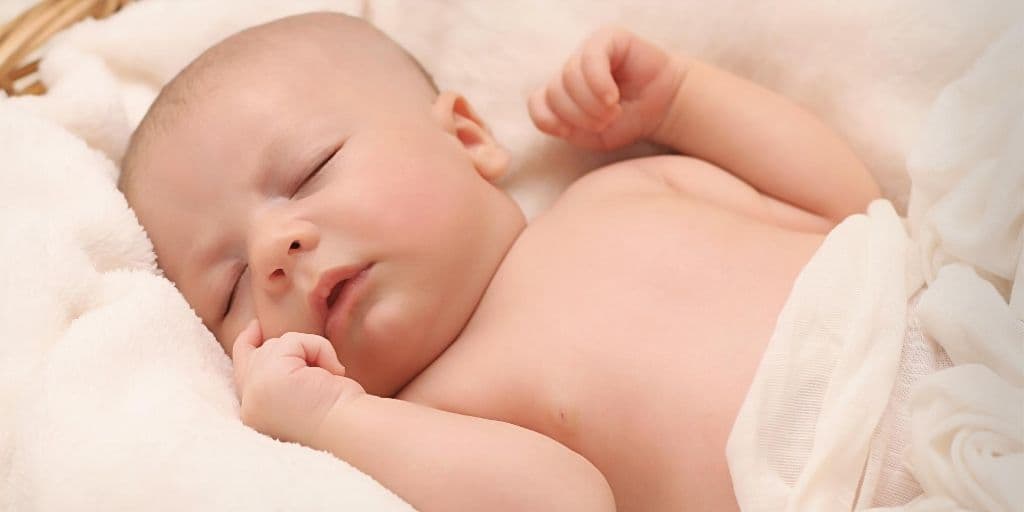
Parents worry about whether your baby rolling over in their sleep is safe.
Many parents worry about what to do when their baby starts to roll on to their tummy during sleep. Here are a few simple guidelines you can follow.
Remember: current safe sleep guidelines recommend that babies are placed on to their backs to sleep – and since these guidelines were introduced, the cases of Sudden Infant Death Syndrome (SIDS) have fallen. Experts agree that this advice has helped; you can read more from the Lullaby Trust here.
Quite simply, your baby rolls onto their tummy because they can! A new trick has been discovered and your little one wants to practise. When this happens, your baby is likely to wake up a little more too, since all that rolling about not only disturbs sleep but also leads on to more movements, such as sitting and pulling up. Similarly, when your baby is practising rolling, they may spend a little longer doing this when they are first put down to bed too, so don’t be surprised if they take longer to fall asleep.
Yes, it’s easier said than done but do try to relax. Safe sleep guidelines are there to give you the knowledge you need to keep your baby as safe as possible while they are asleep. Placing your baby onto their back for sleep is very important, especially for younger babies who are not yet able to roll. But once your baby is able to roll, they are safe to be left to choose their own sleeping position.
Babies that can roll are going to do that, no matter what you do. You cannot stop them from rolling in their sleep. In fact, some babies roll around the crib so much that you would be up and down all night trying to re-position them! The most important thing you can do is to relax and accept that now your baby can roll onto their tummy, there is little you can do to stop them. As long as you keep a close eye on them and are on hand to re-position them if you feel it’s necessary, there is little else you can do.
Again, when you put your baby to bed, always lay them down on her back. After that, if they move, you can re-position them gently if they have rolled over. Make sure that you remove any swaddle blankets (if you use them) and always ensure there is no loose bedding and no toys in the crib. If your baby is a roller, a sleeping bag is by far the best night time bedding for them.
Make sure your baby is given plenty of tummy time when they are awake – that is, you should lie them on their front to encourage them to move towards developmental stages such as being able to hold their head up, look up and roll. This will eventually lead to rocking on hands and knees, then crawling. They can be put onto a mat or rug on the floor, or you can buy a play mat that has different areas of patterns, sound and texture for your baby to explore.
Rolling over is all a normal part of baby development and is a phase that may not last long. Some babies grow into tummy sleepers, some revert to their back. We’re all unique individuals, after all. However, if you find that your baby is not happy on the tummy but cannot quite roll back again (it happens) then by all means pop in and roll them back again. Your baby will let you know they need you, so there’s no need to keep watch just in case! As with many phases in your baby’s development, you can expect this one to last around two to three weeks – so take a deep breath and repeat after me: this too shall pass.
Further reading:
Your baby’s developmental milestones
Food to encourage good baby sleep
Swaddling tips and tricks
Sep 17 2018
Posted by: SnoozeShade HQ
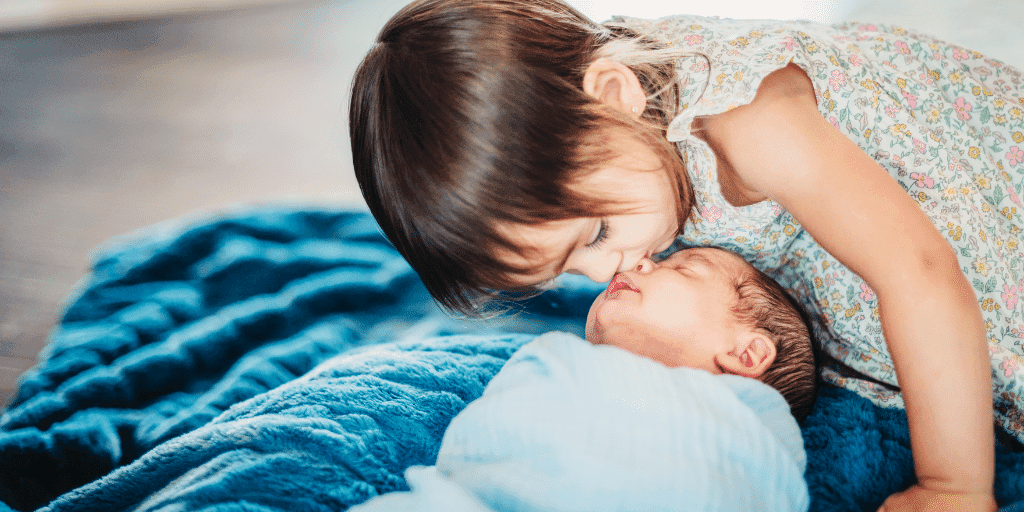
As your family grows, your bedtime routines change – and for many, this can mean that a huge upheaval is on the cards. But don’t fear! Lots of families find the transition tricky at first but that doesn’t mean it will always be hard work. In this post, we’re looking at parents of toddlers who have just welcomed a new baby, how the newborn bedtime routine differs from the toddler bedtime routine – and how to adapt each one to make them work together. It can be done!
A good bedtime routine is SO important if you want to have some order in your home. When it comes to sleep, little ones need to know what’s expected of them and a good solid routine helps immensely. A good routine helps to show your child that it’s bed time and therefore time to sleep and if you already have a good routine with your toddler then it shouldn’t be too difficult to get one going with your baby too.
Mom of three, Sarah, told us: “Before his sister came along, our toddler would share a bath with his elder sister at around 7pm. They would then both snuggle in our bed for stories and then settle down for sleep in their own rooms. My eldest would never be seen again until the morning but my son was a different story. He liked to ‘stall’ for time quite a lot! He’d need a drink. He’d need to be tucked in. He’d need more plushies. You get the idea. But he did stay in his room and he did always fall asleep easily. Staying asleep was not on his agenda but that’s a different story. So, his bedtime routine was:
Sarah also told us: “My son had just turned two when his little sister was born. She was breastfed, so immediately our routine needed tweaking. Often, she wanted to cluster feed at bath time, so I wasn’t able to be there for the others. Luckily, Daddy was able to take over and some nights I was able to stay for stories but mostly I had to stay away to tend to the baby. As she got older, she started to have baths with the older two, so we could adapt the bedtime routine a little for her too. We started having shorter stories all together and individual stories in their own rooms so that my son still had some alone time with one of us. The routine changed quite frequently though, because the baby was so unpredictable. So, the newborn’s bedtime routine looked like this:
What the family routine looks like
It took us a while to get into the swing of a newborn / toddler bedtime routine. Most nights the toddler went to bed first, having his bath and story as he had done before the baby came along. Some nights, they all bathed together, then had stories separately. On a typical night, the bedtime routine looked like this:
It’s important to try to keep your usual routine going with your newborn so that the newest member of your family can simply fit in with what already works with everyone else. Based on the routines above, your new routine might look like this:
It’s not always easy. Make a point of regularly assessing your routine to make sure it’s still working. As your children grow older, their needs change and so do their habits. Go with the flow, let your children lead you but do remember that the best foundation is always a consistent routine, no matter what.
Best of luck!
How did you manage your children’s bedtime routines when a new baby came along? Share your story and tips with us.
Further reading:
Seven Expert Tips to Help your Baby Sleep Through the Night
10 of the Best Baby Sleep Books and Apps
Three Baby Sleep Problems and How to Fix Them
Sep 10 2018
Posted by: SnoozeShade HQ

This is never truer than when it comes to sleep. Though you’ll be offered lots of helpful advice from friends and family, nobody knows your baby quite like you do, so follow your instincts when it comes to baby sleep.
That said, there are some general guidelines on baby sleep patterns that are helpful for you to use (with a few tweaks that reflect your own child and your situation), so we thought we’d attempt to answer a frequently asked question – how many naps does my baby need?
Babies need more sleep than adults because it’s during this time that their bodies and brains start to take on the huge job of developing and growing. Babies also rest and re-charge, ready for whatever else life can throw at them. When baby naps, new moms should also try to get a little sleep too, though it doesn’t always work out that way.
In the early days and weeks, your baby’s routine changes almost daily because they’re developing at such a rapid rate, so it’s easier to divide your baby’s sleep needs by age and stage.
Newborn: Tiny babies to sleep a lot – around 18 hours out of 24. At this stage, there are no real patterns to the naps they take and they should be as and when your baby needs them – allow your baby to lead you at this stage. A sleep routine might not be possible at first and can only become frustrating if you’re trying to impose one, so relax for now.
1 to 4 months: Although your baby will gradually start to settle into a routine once the first four weeks are over, this may still change from day to day. Many babies will have four or five naps a day at this age, with (hopefully) longer spells during the night, waking for feeds and nappy changes.
3 to 4 months: At this age, you might notice that your baby takes around four naps a day, but as all babies are different this can vary so it could be three, or it could be five. The key thing is being able to spot your baby’s sleep cues, so that you can settle your baby to sleep just as tiredness kicks in.
5 to 8 months: As they get older, babies will naturally drop a nap during the day, so at this stage they will typically have three naps. Like adults, some need more sleep than others.
9 to 18 months: This is the time when your baby’s nap routine can really begin to take shape. Some babies may already be in a good routine by this point, though many won’t be. By now, babies usually need two naps a day, with some preferring to take longer one in the morning and a shorter one in the afternoon.
15 months to 4 years: From this age, it’s likely that your baby will need only one nap during the day and their night time sleeps will be longer – hopefully they will sleep through the night. Some children will drop daytime naps altogether long before they turn four, so be guided by your little one. Illness and upheavals may mean they revert to having a nap and children of this age will still often fall asleep in the car or pushchair.

This really depends on your baby. In the early days, newborns may only be able to manage an hour and a half awake – some will power on for two hours. As they grow, the periods of wakefulness will increase but don’t try to keep them awake when you notice sleep cues – you’ll end up with an over tired, cranky baby.
Again, this changes as babies grow – naps are long when babies are very young and daytime naps get shorter as they get older. As a general rule, less than an hour is not really a ‘good nap’ but a short cat nap in the morning or late afternoon might do the trick. If your baby wakes up happy and seems rested, then they’ve probably had long enough.
Average Sleep Durations For Children From Birth to Five Years
|
Age |
Daytime |
Nighttime |
|
1 week |
8 hours |
8 hours 30 minutes |
|
4 weeks |
6-7 hours |
8-9 hours |
|
3 months |
4-5 hours |
10-11 hours |
|
6 months |
3 hours |
11 hours |
|
9 months |
2 hours 30 minutes |
11 hours |
|
12 months |
2 hours 30 minutes |
11 hours |
|
2 years |
1 hour 30 minutes |
11 hours 30 minutes |
|
3 years |
0 to 45 minutes |
11 hours 30 minutes |
|
4 years |
|
11 hours 30 minutes |
|
5 years |
|
11 hours |
These are average times, as all babies are different. Some babies may sleep through the night from an early age, while others might still be waking well into their second or third year.
Further Reading:
Toddler Nap Problems and Their Solutions
Avoid Night Time Sleep Problems and Daytime Naps
Help Your Baby Nap Longer
Aug 31 2018
Posted by: SnoozeShade HQ

I get asked a lot if the SnoozeShade for Travel Cots, Playards and portacribs fits the triangular style eg Guava Lotus, Nuna Sena and BabyBjorn
The answer is YES as you can see from these photos sent by happy customers.
Here on the BabyBjorn


Here it is on the Guava Lotus


Aug 16 2018
Posted by: SnoozeShade HQ
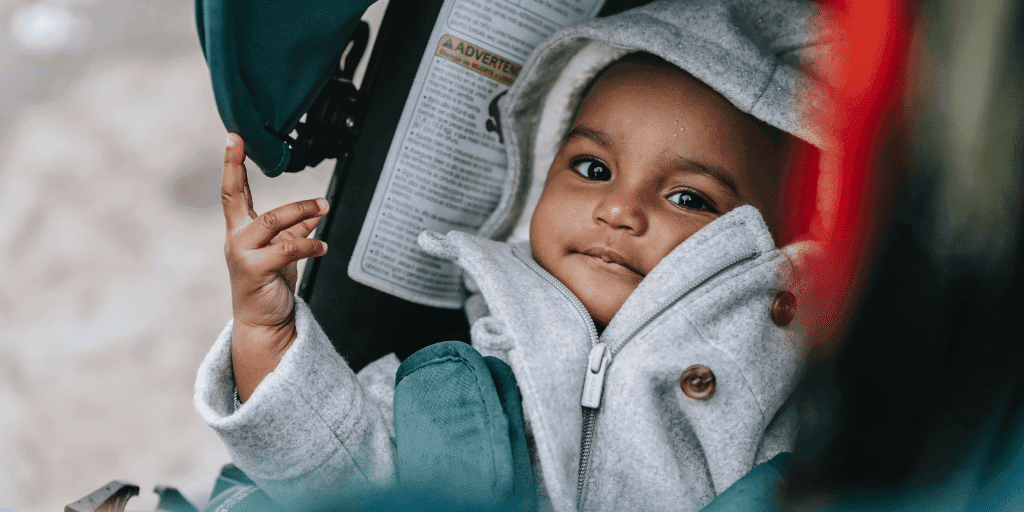
There are a number of factors that need to be aligned in order for the average human to fall asleep. When it comes to babies, these factors can seem more than a little precarious, and we parents tend to spend a lot of time and energy obsessing over it all in the pursuit of better baby sleep. Well, its time to stop! There is no real secret to it all. Helping your baby to sleep is really quite simple, and its our mission to prove that to you. Of course, there’s no accounting for your baby’s personality (and that really does affect how they sleep) but as a general rule, there are many things that you can do to help your little one to drift off. This week we’re looking at using your SnoozeShade as a blackout. Read on to find out more.
Why do you need a blackout?
Lots of parents assume that their child is scared of the dark. Or maybe your older child has told you themselves that they’re scared of the dark. The thing is, your body actually needs the dark so that you can sleep!
In order to fall asleep, our bodies produce a hormone called melatonin. Its this hormone that sends sleepy signals from the brain and allows our body to relax and get ready for a snooze. The problem occurs when melatonin production is blocked, and this can happen all too easily, seeing as the body needs darkness to produce the hormone in the first place. So if you’re placing a nightlight in your baby’s room, or you’re exposing them to lots of light at nap time, you’re actually hindering the body’s ability to produce the hormone that is going to enable them to sleep.
Put simply, a darkened environment sends signals to the brain that all is good, and the production of melatonin can begin. Once this process occurs, sleep rapidly follows. So the elimination of light, whether it is natural or not, is vital if you want to get some sleep for yourself, or for your little one.
Blackout blinds
Blackout blinds should be an essential feature of your little one’s nursery, and lots of curtains will have a special lining for this very reason. If not, get your hands on a blackout blind to go underneath your curtains, or to pop over the top when its time to sleep. Creating this darkened environment at bedtime can make all the difference for early wakers too!
Using your SnoozeShade as a blackout
Alongside essential protection from the sun’s harmful rays, the SnoozeShade also creates a darkened environment for better baby sleep. When fully zipped, your little one is cocooned in a dim and cosy space perfect for assisting the body’s production of melatonin. What’s more, there are now no further distractions or sources of stimulation to further prevent sleep- clever, huh?
If you use your SnoozeShade whilst out and about, rest assured that the hustle and bustle of wherever you are is usually no problem at nap time. Your baby’s body is shaded not only from the sun, but from all that pesky daylight that hinders the body’s ability to fall asleep easily. Lots of parents tell us that they use their SnoozeShade as a blackout on the pram or stroller at home too- you don’t have to be out of the house!
At a pinch, if you’re away without a blackout blind in the room where your baby is sleeping, your SnoozeShade will be the perfect solution for better sleep- on the go or not.
Why good sleep matters
It goes without saying that a baby who doesn’t nap well is no fun to be around, but there’s actually more to it than that. Each time we sleep, our bodies are undergoing a vital process of not only resting, but repairing, growing, and regenerating too. Sleep is not to be sniffed at- for babies and grown ups alike- and is actually a powerful tool for maintaining and boosting physical, emotional and social development. So do yourself a favour and get yourself and your baby into a darkened space when you need to.
Jul 24 2018
Posted by: SnoozeShade HQ

We cannot stress this enough. Sun protection for the whole family is so very, very, VERY important. Just one incidence of sun burn during childhood can increase the risk of developing skin cancer later in life, and the effects of sun stroke in children and be really dangerous too. It just isn’t worth the risk! So with this in mind, this week we’re sharing with you our five top sun protection must haves. Please let us know in the comments what makes it on to your list too.
SnoozeShade
It’s probably no surprise to you, but we genuinely believe that every family should own a SnoozeShade. For protection against up to 99% of the sun’s UV rays, and peace of mind when the babies are small- not to mention elimination of distractions for better daytime sleep on the go! Each SnoozeShade is subjected to rigorous safety testing that goes above and beyond the nursery industry requirements, and made from an air permeable fabric that means they are 100% safe to use in hot weather. It’s worth baring in mind that babies under the age of 6 months cannot use sunscreen, and experts agree that covering a pram is a lot better (and safer) than exposing small babies to direct sunlight. Read more here.
Sunscreen
For babies older than six months, toddlers, children and adults- sun screen is a must. A non-negotiable. Don’t leave home without it, and don’t neglect it on overcast days either.
Sun hat and sunglasses
Just as sunscreen should be a solid part of your daily routine, so should the sunhat and sunglasses too. Experts believe that sunhat and glasses scan help to protect against damage caused by the sun’s harmful rays, and protect against the effects of sunstroke too. A no brainer really.
Water
We’ve written before about the effects of heatstroke, and we can’t stress it enough- staying hydrated is one of the best ways to stay healthy in the sunshine. Smaller babies should be offered more frequent feeds, and older children should get into the habit of carrying a bottle of water with them wherever they go. Same goes for parents- lead by example and stay hydrated throughout the day.
Look out for signs of dehydration:
Shade
If you can’t avoid the sun when it’s at its hottest (between 11am and 3pm) then it’s a really good idea to make it your mission to seek shade wherever you go. Babies and toddlers in prams and strollers can use a SnoozeShade (or similar) to protect against the sun and to provide a shady area. For all other times, make sure you find as much shade as you can to keep everyone cooler and safe during the summer.
Jul 12 2018
Posted by: SnoozeShade HQ

Here at SoozeShade we’re not sure when we’re going to feel comfortable classing our recent weather as ‘summer’- but for now it’s a heatwave, and so this week we’re looking at ways to cope. We asked our lovely community for their top tips, and we’ve got some great brands for you to check out too. Read on to find out our top tips for coping in a heatwave…
Sun protection!
It goes without saying that sun protection is of utmost importance throughout the summer months, and especially during a heatwave. Please, please, make this a vital part of your daily routine. Read this post for more information on SnoozeShade and sun safety, , this post for information on easy ways to protect kids from the sun, and this post for information on blankets over prams. Please do get in touch if you have any questions at all.
Stay Hydrated
More than anything during a heatwave, staying hydrated is so important. Beth at Twinderelmo has been treating her kids to frozen squeeze yogurts, and Amy at The Smallest of Things says she makes her own iced lollies so the knows exactly what goes into them. We love this idea, and recommend using a Fill n Squeeze kit to make your own healthy fruit smoothies to take out and about with you to cool little ones when you need to.
Make sure your little ones are drinking enough water too. We love Babycup for tiny hands, and these super cute water bottles from Tum Tum for older kids. Younger babies should be offered frequent feeds throughout the day- and if you’re breastfeeding and you have time, you can take Abi’s advice to make a breastmilk lolly as a special treat!
Freeze!
Re-usable ice cubes are your friend! Thanks to Victoria at Mummy to My Little Cheeky Monkey and thanks to the Gummee Glove for being the first handy teething mitten with removable teething ring that you can pop into the freezer to soothe sore gums. Genius! Pippa at Red Rose Mummy says she always pops a few ice cubes in some water and leaves them infront of a fan to help cool the air down too.
Water play!
Water play is an excellent way to cool little ones during a heatwave. Make sure you find as much shade as you can, and re-apply sunscreen frequently too. Petra at A Mum Reviews recommends a good old paddling pool to keep little ones cool, and Chelle says she likes to treat the kids to an alfresco bath time when it’s too hot inside. We love that idea! If space is an issue for you, you might find Katy’s tips useful: “We don’t have garden so we use the bathroom sink as a toy paddling pool and wash our faces lots throughout the day.”
Tips to cool down
Despite all the best intentions, we can all get a little hot and bothered during a heatwave. Carrie at Flying with Baby says she keeps a spray bottle of water to hand while she’s out and about to spritz over faces when she needs to. Sophie at Soph Obsessed says she keeps the curtains drawn throughout the day to keep rooms cooler, while Vi at Dancing in my Wellies keeps windows open and strips baby down to nappy and vest when she needs to. For more tips on keeping little ones cool at bedtime, check our Maria’s post here, Lastly, if you’re worried about your little one we recommend a Pacif-i to keep an eye on baby’s temperature safely and easily.
What are your top tips for coping in a heatwave?
SaveSave

© 2025- SnoozeShade | All rights reserved